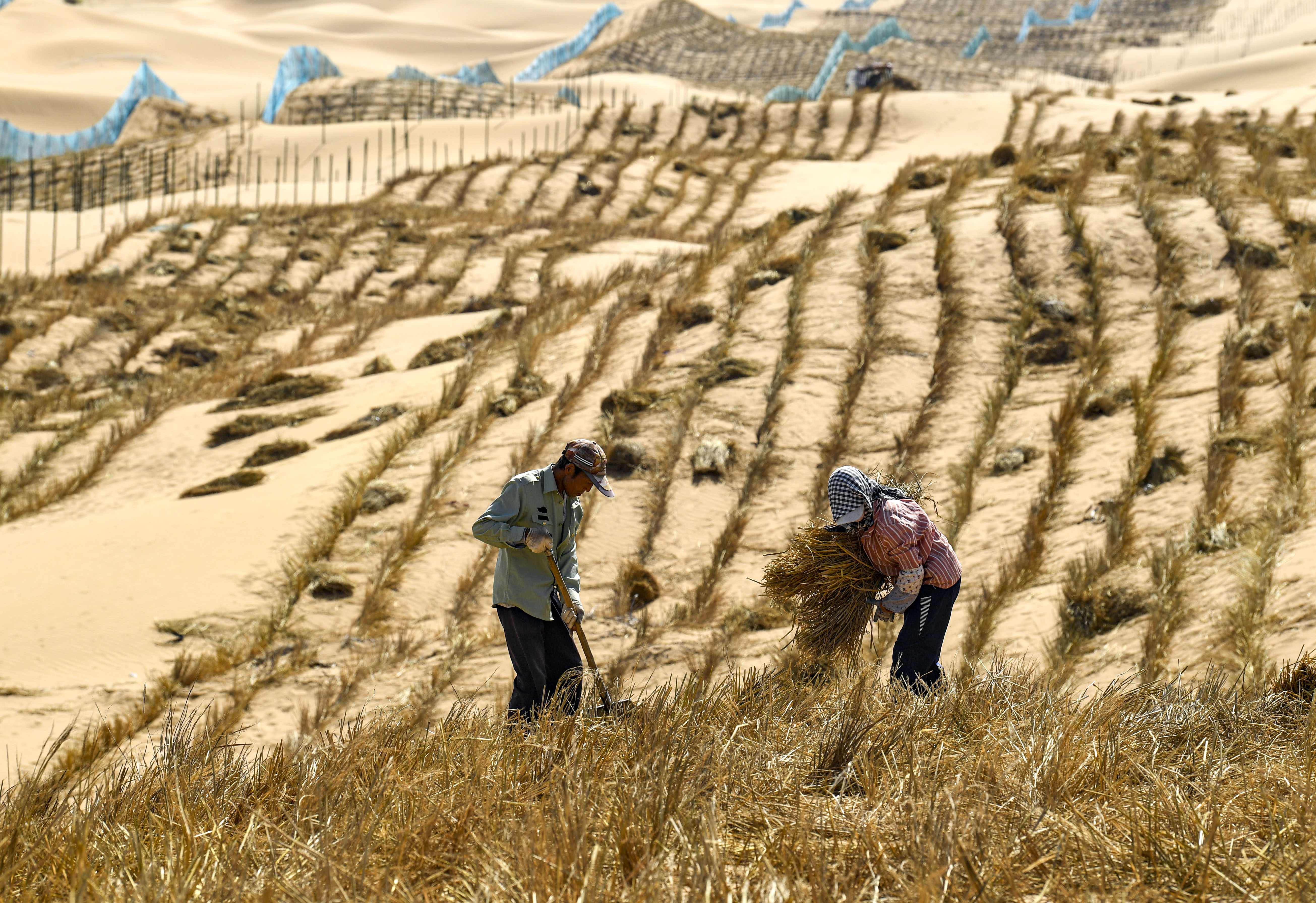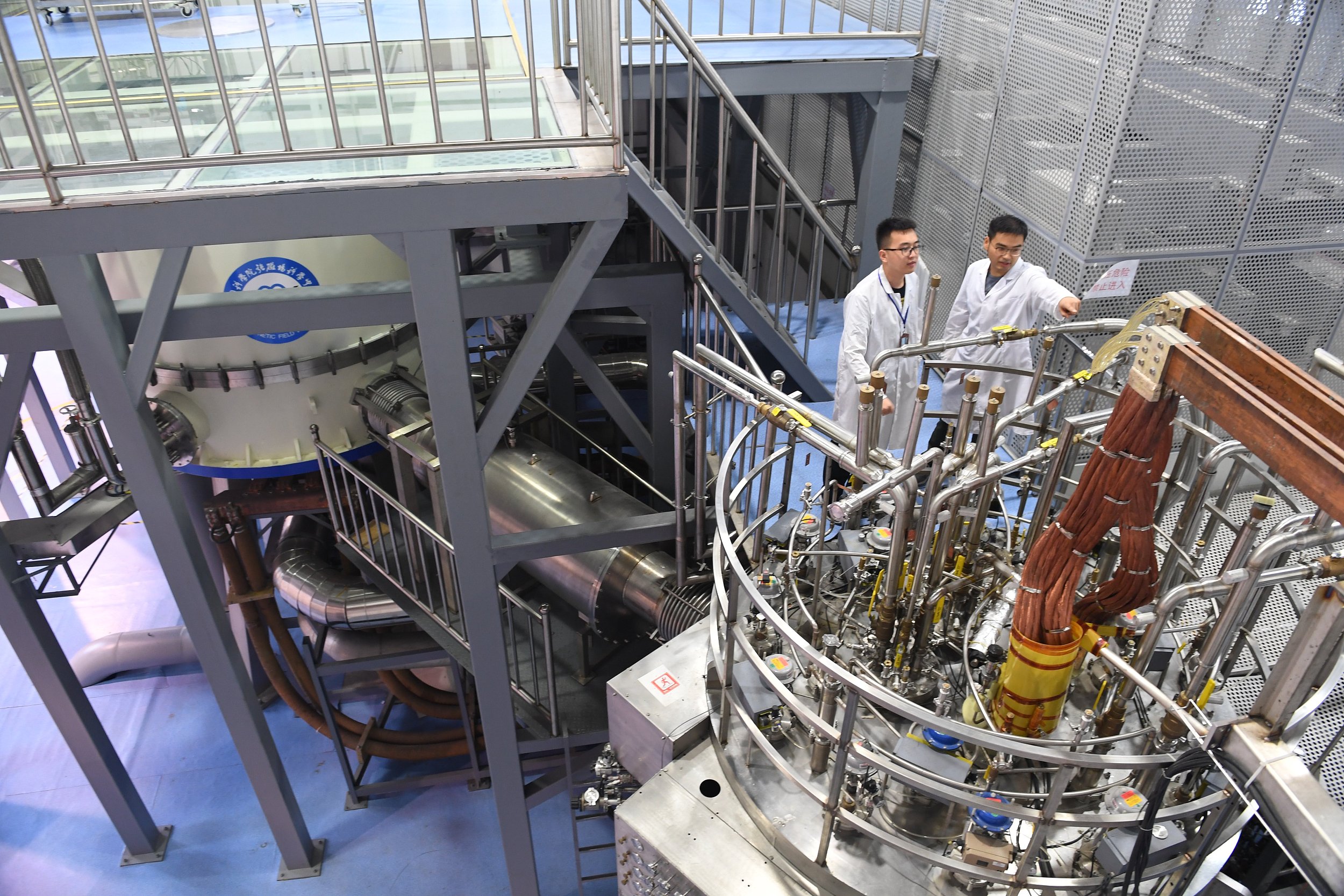Bringing Life to the Sea of Sand
The Tianjin Binhai Library is nicknamed "The Eye of Binhai." Part of the library's atrium displayed in the photo resembles a "book mountain," consisting of 34 stage platforms filled with books. (PHOTO: XINHUA)
By WANG Xiaoxia
Desertification is a common challenge facing humankind, which affects more than 160 countries worldwide with a combined population of about two billion people, and having wider implications on food security, climate change, and biodiversity.
China, as one of the countries with the largest desertification areas and affected population, has been committed to combating desertification for seven decades and achieved a historic transformation.
By using innovative techniques in compliance with local conditions, China has found its own way to curb and reverse the expansion of deserts, and its experience is worth sharing.
Magical straw squares
In the early years of China's battle against desertification, Chinese people figured out a simple but effective method to ensure the stable operation of the Baotou-Lanzhou Railway that came into operation in 1958.
The 990-kilometer railway had to run through the Tengger Desert for 140 kilometers and was always hampered by sandstorms and shifting sand dunes.
Attempts such as covering the sand with pebbles and mat, or mixing sand with asphalt, had all failed to stop the continued erosion of the desert, until one day workers found that the Chinese characters made of straw, which were words to encourage themselves, were not destroyed by sandstorms, and most of the characters consisted of square shapes.
This finding inspired researchers to create a straw checkerboard of about one square meter in size. It was fixed to the desert sand and acted as a barrier preventing sand from moving.
Based on the straw checkerboard barrier, a comprehensive sand prevention system was built. Since then, the Baotou-Lanzhou Railway has had no interruptions to its operation due to sandstorms for past 60 years.
Apart from controlling moving sand, China carried out key ecological projects and improved legislation to facilitate anti -desertification efforts, including the Three-North Shelterbelt Forest Program (TSFP) approved in 1978 and the world's first integrated law on prevention and control of desertification, issued in 2002.
Tim Christophersen, ecosystems expert for the UN Environment Programme (UNEP) has hailed the improvement in China's large-scale reforestation and ecosystem restoration expertise.
Desert fighters
However, managing desertification is not merely a matter of policy or investment, but rather a test of the determination, courage and even faith of all role players.
There is an impressive story behind every splash of greenery added to the land of China.
"I do only one thing in my life — curb the desertification," said Shi Guangyin, a farmer and veteran CPC member from Dingbian county, located on the edges of the Maowusu Desert, Yulin city, in northwest China's Shaanxi Province. Shi received the July 1 Medal, the highest honor in the CPC for his contribution to desertification control over the past decades.
Yulin is home to 99 percent of the desertification area in Shaanxi Province. Shi led the villagers to plant trees on 14 thousand mu (1 mu is about 666.7 square meters) of land from 1968, creating the first oasis for the village in three years.
In 1984, he started his own company to control desertification. Over the years, local people led by Shi have braved innumerable difficulties, planted and kept alive more than 53 million trees on 250,000 mu of barren land, and in the process built up a "Green Great Wall" on the edge of the Maowusu Desert.
Wang Youde from Lingwu county, Northwest China's Ningxia Hui Autonomous Region, is another example. He led his colleagues to build 60,000 mu of forest in the past two decades, effectively preventing the expansion of the Maowusu Desert.
Needless to say, Saihanba National Forest Park, once a barren plateau in China's north, was turned into a lush oasis by the efforts of three generations planting thousands of hectares of trees.
Invisible treasures
When you do land restoration, you address poverty, said Ibrahim Thiaw, the Executive Secretary of the UN Convention to Combat Desertification (UNCCD).
The restoration of ecosystems can promote the full use of rich resources contained in the desert, creating sustainable job opportunities that encourage local people to take better care of the land in return.
One such example is the Kubuqi Desert, located in north China's Inner Mongolia Autonomous Region, which is rich in solar resources. Thus, the local government managed to coordinate desertification efforts with the development of photovoltaic power projects.
At an industrial base in the desert, photovoltaic panels shine in the sunlight, while potatoes and other crops grow under the shade of the panels.
Fifty-three percent of the desert is now covered by vegetation, with the level of precipitation witnessing a sharp rise, and the number of sandy days dropping significantly. The improvement of the ecological environment there has also boosted local tourism and in turn increased local people’s incomes and improved livelihoods.



